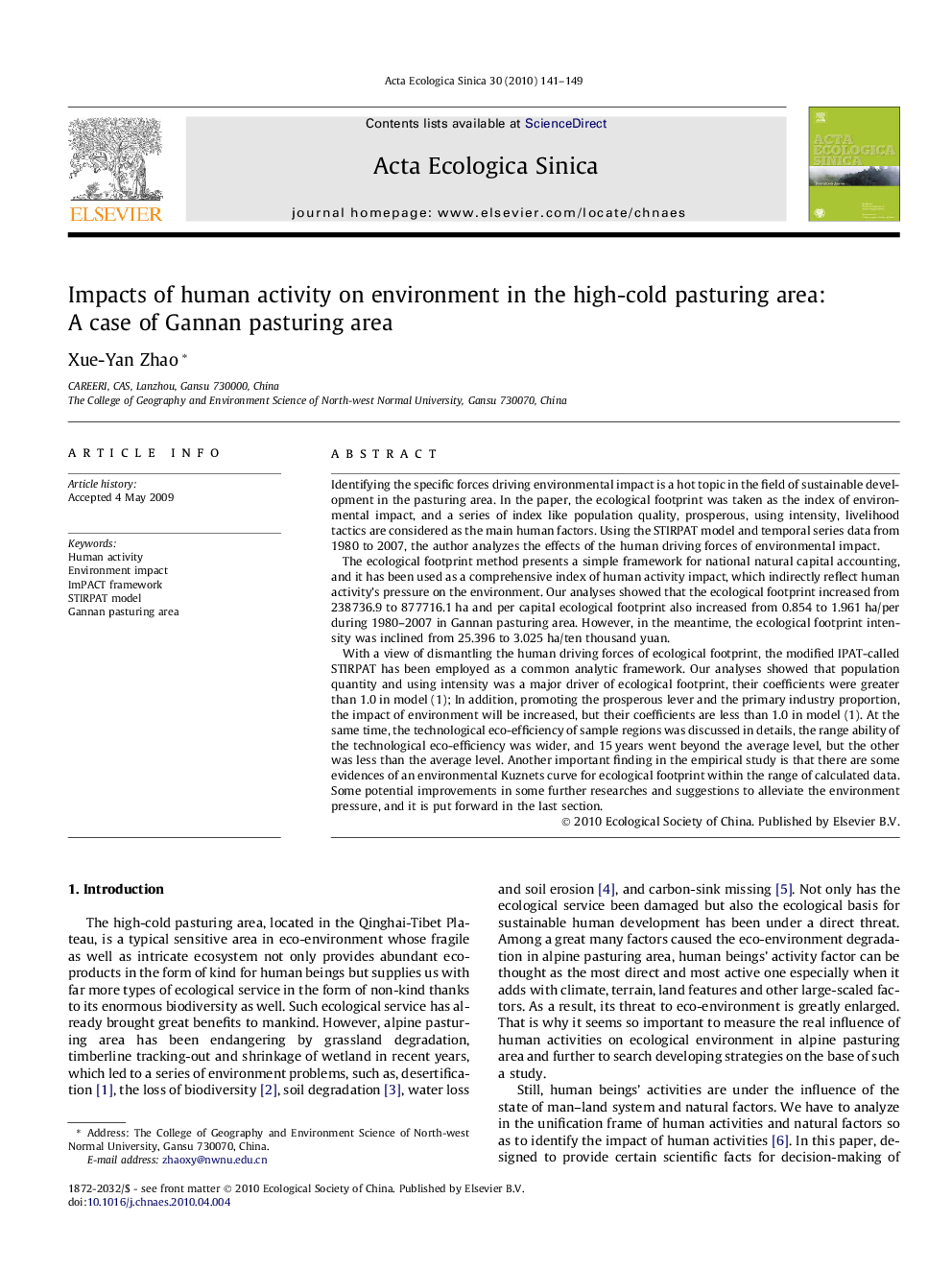| Article ID | Journal | Published Year | Pages | File Type |
|---|---|---|---|---|
| 4380183 | Acta Ecologica Sinica | 2010 | 9 Pages |
Identifying the specific forces driving environmental impact is a hot topic in the field of sustainable development in the pasturing area. In the paper, the ecological footprint was taken as the index of environmental impact, and a series of index like population quality, prosperous, using intensity, livelihood tactics are considered as the main human factors. Using the STIRPAT model and temporal series data from 1980 to 2007, the author analyzes the effects of the human driving forces of environmental impact.The ecological footprint method presents a simple framework for national natural capital accounting, and it has been used as a comprehensive index of human activity impact, which indirectly reflect human activity’s pressure on the environment. Our analyses showed that the ecological footprint increased from 238736.9 to 877716.1 ha and per capital ecological footprint also increased from 0.854 to 1.961 ha/per during 1980–2007 in Gannan pasturing area. However, in the meantime, the ecological footprint intensity was inclined from 25.396 to 3.025 ha/ten thousand yuan.With a view of dismantling the human driving forces of ecological footprint, the modified IPAT-called STIRPAT has been employed as a common analytic framework. Our analyses showed that population quantity and using intensity was a major driver of ecological footprint, their coefficients were greater than 1.0 in model (1); In addition, promoting the prosperous lever and the primary industry proportion, the impact of environment will be increased, but their coefficients are less than 1.0 in model (1). At the same time, the technological eco-efficiency of sample regions was discussed in details, the range ability of the technological eco-efficiency was wider, and 15 years went beyond the average level, but the other was less than the average level. Another important finding in the empirical study is that there are some evidences of an environmental Kuznets curve for ecological footprint within the range of calculated data. Some potential improvements in some further researches and suggestions to alleviate the environment pressure, and it is put forward in the last section.
